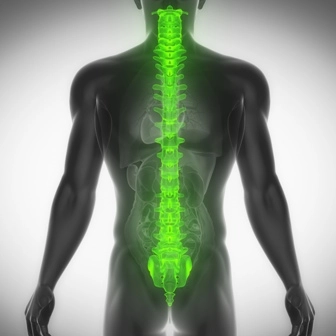Coding for Whiplash? Delve Deeper Into the Long Descriptors
Tips on four most common neck pain diagnoses.
Have you made your very own GEM list of diagnosis codes that you encounter in your practice? “Get your ICD-10 coding book for Chiropractics and create your list of most used ICD-9 codes mapped to ICD-10 codes,” tells Doreen Boivin, CPC, CCA, with Chiro Practice, Inc., in Saco, Maine. Whiplash is a common diagnosis in every chiropractic office, so here’s assistance with how to prepare for these cases when ICD-10 is implemented.
Tame the Neck Whiplash Injury codes
A patient presents to your practice with a whiplash injury of the cervical spine. The ICD-9 code for a whiplash is 847.0 (Neck sprain ). This code is listed in the category 847 (Sprains and strains of other unspecified parts of the back), with six options for various parts of the back.
Now consider your options under ICD-10. Your best match will be S13.4xx_ (Sprain of ligaments of cervical spine) under category S13( Dislocation and sprain of joints and ligaments at neck level) but you could get confused if you are only looking at the brief descriptors, as you would not find the specific diagnosis. However, if you go deeper into the description of S13.4xx_, it also includes:
Remember: Always read the long descriptor before choosing the code.
Seventh character note: For codes denoting injury, keep in mind that you should add the appropriate seventh character to the code such as:
A: Initial encounter
“The seventh character will prove helpful in that we will be indicating to the payers the type of encounter. Even though the CPT® code denotes the new patient and established patient exams the diagnosis will allow more specificity on each encounter,” explains Boivin.
Crack Down Cervicalgia
When a patient has neck pain, you know that’s a symptom rather than a diagnosis. In ICD-9-CM, the code is 723.1 (Cervicalgia) which excludes conditions due to intervertebral disc disorders (722.0-722.9) and spondylosis (721.0-721.9).
You’ll also have a code for cervicalgia in ICD-10, listed under the category M54 (Dorsalgia). The best match is M54.2 (Cervicalgia) excluding cervicalgia due to intervertebral cervical disc disorder discitis NOS (M46.4-), and current injury of spine by body region.
Sharpen Your Cervical Disc Degeneration Coding Skills
When reporting cervical disc degeneration, you’ll turn to ICD-9-CM code 722.4 (Degeneration of cervicothoracic intervertebral disc), listed within the category 722 (Intervertebral disc disorders). Category 722 includes both degeneration and displacement of the intervertebral discs at various spinal levels, with 722.4 referring to the cervicothoracic intervertebral discs.
In ICD-10, the best match will be M50 ( cervical disc degeneration ). Category M50.3 (Other cervical disc degeneration) gives you four possibilities based on the location of the cervical disc degeneration:
o Other C2-C3 cervical disc degeneration
o Other C4-C5 cervical disc degeneration
o Other C7-T1 cervical disc degeneration
Do Cervical Disc Herniation or Prolapse Coding The Right Way
For a cervical discogenic syndrome, or cervical disc herniation, the ICD-9 code that applies is 722.0 (Displacement of cervical intervertebral disc without myelopathy, Neuritis [brachial] or radiculitis due to displacement or rupture of cervical intervertebral disc). The category 722 (Intervertebral disc disorders) includes both degeneration and displacement of the intervertebral discs at various spinal levels.
With ICD-10, category M50.20 (Other cervical disc displacement, unspecified cervical region). Category M50.2 (Other cervical disc displacement) gives you four possibilities based on the location of the cervical disc displacement:
o Other C2-C3 cervical disc displacement
o Other C4-C5 cervical disc displacement
o Other C7-T1 cervical disc displacement
Remember: The ICD 10 codes represent greater details and specificity. The above codes belong to the neck pain cases that you most commonly diagnose in your practice.
We hope to add some more codes for common conditions to your quick reference database in the upcoming issues.
Plus: With this background knowledge you will also need to work on the administrative aspects. “Talk to your software vendor and clearinghouse and watch webinars for assistance,” urges Boivin. “Contact your local association and network.
D: Subsequent encounter
S: Sequela.
o Other C3-C4 cervical disc degeneration
o Other C5-C6 cervical disc degeneration
o Other C6-C7 cervical disc degeneration
o Other C3-C4 cervical disc displacement
o Other C5-C6 cervical disc displacement
o Other C6-C7 cervical disc displacement




